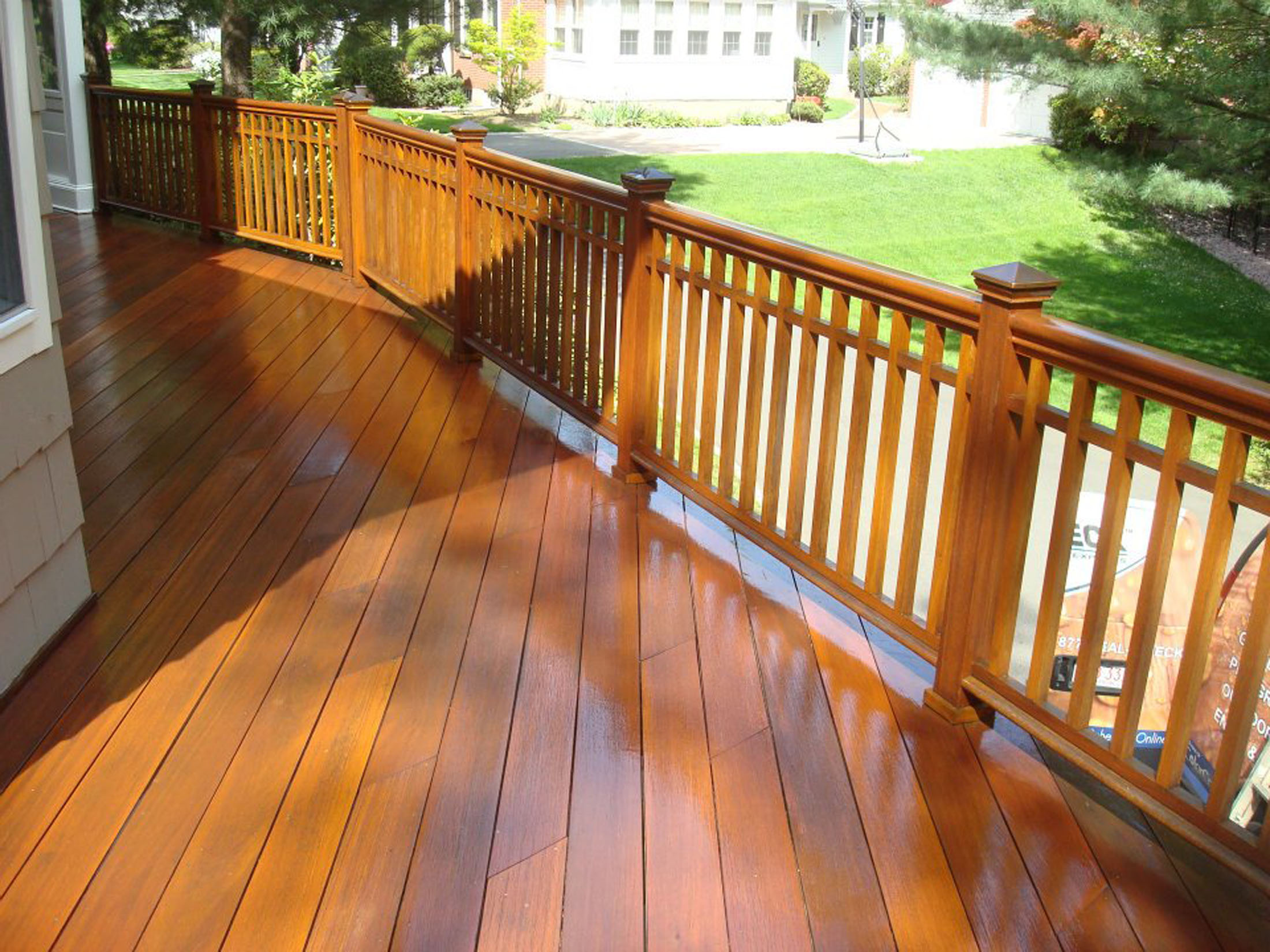Which Deck Materials Are The Most Eco-Friendly and Renewable?

Most people in Massachusetts want to keep the earth clean and free of harmful chemicals and pollutants for future generations to enjoy. At Seal-a-Deck, that’s also our focus as an eco-friendly deck company. If that’s your goal, choosing a material for your next deck project that inflicts little or no harm to the environment is important.
Making that happen requires doing your homework in advance. To help make your decision a “greener” one, what follows are some of the more eco-friendly and renewable deck materials out there.
Your “Green” Deck Material Checklist
To get started, use this “green” deck material checklist to rank in order of importance of these material characteristics:
• Sustainability. Choose a material that’s harvested responsibly and not a finite resource.
• Manufactured cleanly. Look for a product that’s made without using toxic chemicals. Does it give off any bi-products that could harm your family or the environment?
• Local availability. The farther away your decking material comes from, the more energy is used which increases its environmental footprint.
• Recyclable. Find a material that can be easily recycled or one that was initially made from recycled or reclaimed products.
• Maintenance. Can the deck be maintained without using harmful chemicals like stains and sealants?
• Longevity. The longer a deck lasts, the more eco-friendly it is. Overall, exceptional longevity trumps the use of harmful chemicals used to make materials in the first place.
Now that you’ve got your list together, it’s time to plug in some decking materials.
Natural Wood
Not only does it look great, but natural wood is also long-lasting and economical, which makes it good for the environment. However, most wood decks require maintenance, including washing and refinishing at least every two years. But even when taking that into consideration, wood’s longevity factor makes it “greener” than most other materials.
Cedar is also naturally resistant to rot and insect damage, which means it doesn’t have to be
pre-treated with toxic chemicals. On the other hand, Southern yellow pine must be chemically pressure treated first with a preservative to provide the same resistance properties.
If you prefer wood for your deck, location will also be a determining factor when it comes to its environmental impact. Yellow pine is grown mainly in the Southeastern United States, which means shipping it to Massachusetts doesn’t require much energy.
Another tropical hardwood option you have is Ipe, as it looks beautiful, lasts for years, and is naturally resistant to bugs, fire, and moisture. Most Ipe comes from South America, so choose a sustainable product that’s “FSC certified” to ensure it was harvested responsibly. Long shipping distances do lower Ipe’s “green” value compared to other woods, but its longevity factor more than makes up for those deficiencies.
Another relatively new addition to the wood decking market is highly renewable bamboo, which has comparable characteristics to hardwood without the slow growth cycles. However, to ensure durability bamboo must first be “strand-woven”, which requires the use of toxic chemicals.
Composites and PVC
These decking materials have become quite popular in recent years because they almost look like natural wood without the bi-annual maintenance that requires potentially harmful stains and sealants. Composite and PVC products are usually made from recycled materials, and they resist stains, cracks, warping and insects very well.
Although virtually no maintenance is a huge positive for these materials, these more expensive PVC and composite decks still need to be pressure washed every year. And, these products lack the look, feel and graining patterns found in all-natural wood.
Another downside to PVC and composites is that it’s sometimes difficult, if not impossible, to recycle them responsibly after they’ve been used in a deck. To offset that factor, look for decking materials that come from recycled materials in the first place. Overall, composites and PVC are eco-friendly and sustainable because trees don’t have to be harvested to produce them.
There are now several composite decking manufacturers that market wood/plastic composite decking that’s made from highly eco-friendly and renewable materials, including dried rice hulls, powdered paper sludge, and recycled carpet fiber. Although all contain some plastic or polyethylene, they’re still a valid “green” choice over some other deck materials.
Eco-Friendly Deck Repairs and Restorations in Massachusetts
At Seal-a-Deck, we’re an eco-friendly company that’s strongly committed to preserving our planet, reducing waste and saving money for our valued clients. We specialize in top-quality deck check-ups, repairs, redecking services and new deck constructions for homeowners in Massachusetts.
For more information about our client-reviewed deck services, or to schedule a deck check-up, call Seal-a-Deck today at 978-538-7325, or visit our website now at sealadeck.com!





